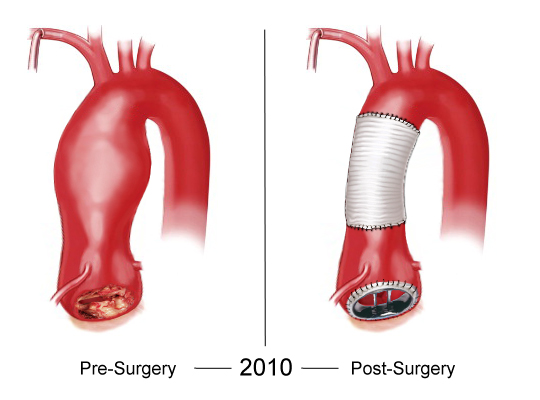Update
(Page 1)
Déjà Vu
(The second open-heart surgery)
I know what’s going on here...
I have finally figured it out...
There is just too much LOVE in my heart!

Not unlike The Grinch whose heart grew three times the size when he discovered the meaning of Christmas, so did mine...




Perhaps not three times the size and not the heart itself, but the root of my ascending aorta had more than doubled in size according to recent CT Scans. It had dilated from the average 2.5cm to 5.3cm, and that is why I had to undergo another open-heart surgery to correct the aneurysm.
You can read my story from the beginning here, but let me sum it up before explaining what, how, and why things happened that lead to my second open-heart surgery on February 4, 2021.

On August 27, 2010, I had my first open-heart surgery to replace my Severe Aortic Stenosis and a Dilated Ascending Aorta with a mechanical On-X valve and graft, respectively. My malfunctioning aortic valve was a combination of hereditary misfortune (I inherited the bicuspid valve from my father), and Rheumatic Fever that most likely caused the severe valve calcification (see photos on bottom here). At least that is my understanding after speaking to numerous doctors and digging deeper into the cause.

During that operation, my Dilated Ascending Aorta was also replaced with a graft. An interesting 2009 article on Ascending Aortic Dilatation Associated With Bicuspid Aortic Valve tackles numerous causes/effects for the condition through syndromes, diseases, and enzymes, but as an engineer at heart (no pun intended...  ), could pressure exerted onto the aorta arch have also played a part? In fluid dynamics, the Bernoulli's Principle states that 'an increase in the speed of a fluid occurs simultaneously with a decrease in static pressure or a decrease in the fluid's potential energy' (meaning, pressure is inversely proportional to velocity). Applying that principle to my calcified valve, it can be hypothesized that my minimal orifice opening would cause the blood to shoot through the valve with greater velocity, not unlike a garden hose spraying water with a force when the nozzle diameter is restricted. Yes, it’s only 3psi, but imagine that restriction squirting blood into my ascending aorta at 60-70 times per minute (Beats per Minute) throughout my lifetime. Google aortic valve replacement and you will often find the ascending aorta being replaced as well. Coincidence, or is there something more to this phenomenon? If there haven’t been quantitative empirical studies done on this, there should be, because from what I found, I am not the only one with these fortuitous conditions.
), could pressure exerted onto the aorta arch have also played a part? In fluid dynamics, the Bernoulli's Principle states that 'an increase in the speed of a fluid occurs simultaneously with a decrease in static pressure or a decrease in the fluid's potential energy' (meaning, pressure is inversely proportional to velocity). Applying that principle to my calcified valve, it can be hypothesized that my minimal orifice opening would cause the blood to shoot through the valve with greater velocity, not unlike a garden hose spraying water with a force when the nozzle diameter is restricted. Yes, it’s only 3psi, but imagine that restriction squirting blood into my ascending aorta at 60-70 times per minute (Beats per Minute) throughout my lifetime. Google aortic valve replacement and you will often find the ascending aorta being replaced as well. Coincidence, or is there something more to this phenomenon? If there haven’t been quantitative empirical studies done on this, there should be, because from what I found, I am not the only one with these fortuitous conditions.
But no matter what the reason behind the calcification and aorta dilation, both were replaced in 2010 and for the next few years everything returned to normal. After several months of recovery, I returned to my regular routines, including working out and lifting weights.

